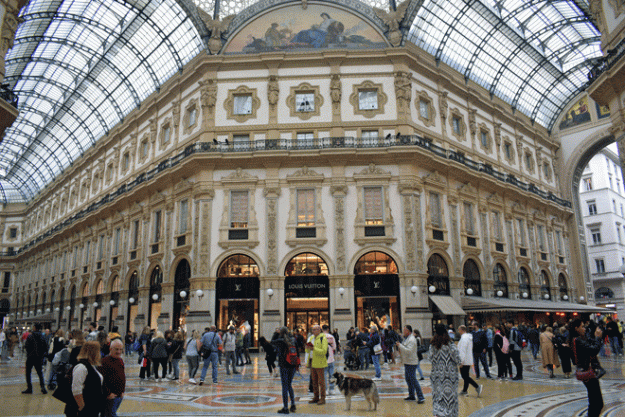

The Sassi-Superga Tramway is a rack railway that climbs two thousand feet to a magnificent view of Turin and the Po valley. Though it operates as a railway it looks like and is called a tramway, to the extent that it has a Turin route-number, 79.
It was built in 1884, powered by cables, and after an accident where the emergency stop fortunately worked perfectly it was rebuilt as a conventional rack railway powered by third-rail electricity in 1935.
It uses the unusual Italian gauge of 4ft 8⅞in (1,445mm). This weirdness arises from 1879 legislation which defined railway-track gauges by measuring them from the centre rather than the inside of the rail. Italian main-line railways have quietly adapted to the worldwide standard gauge of 4ft 8½in (1,435mm), and apart from a solitary funicular, the only other examples of Italian gauge in the world are the tramways of Milan, Naples, Rome and Turin – and the Madrid metro. There is also an Italian narrow gauge of 3ft 1¹⁄₁₆in (950mm).
The depot yard has no rack track, and a steeple-cab electric locomotive shunts the rack-equipped rolling stock using overhead caternary to the beginning of the rack at the entrance. Passenger trains are operated, for obvious safety reasons, with the power car propelling one or two trailers, so that in an emergency the brake-power is where it should be. The loco conveys the cable trams to the Turin street tracks when they need workshop attention.
At the Sassi station there’s a beautifully preserved horse streetcar (no: 197, dating from 1890) in a tiny museum, and outside on a spare platform an early streetcar (no: 209 of 1911).
The trip takes eighteen minutes, mainly through a verdant nature reserve with occasional views of opulent houses with splendid but hilly gardens. By the time the tram is beyond the midway passing loop you can look straight out of the opposite window at the sky with no sign of the horizon below.
The upper terminus is modern and comfortable: its café makes the most of the view and it’s pleasant to sit there until the next tram leaves in an hour.
There is a further treat, though, a short, stiff climb above the station. The Basilica of Superga is a Baroque church, built 1717-31 by Duke Victor Amadeus II of Savoy (1666-1732), later King of Savoy and latterly Sardinia, in fulfilment of a vow he made in the turmoil of the Siege of Turin in 1706. The Chapel of the Vow, to the left of the sanctuary, is kept as a place of silent contemplation and, filled with respectful Catholics, has a distinctive atmosphere of veneration, like the side chapel of the Holy Shroud in the Duomo.
The Basilica is the site of Italy’s great football tragedy, where the entire Grande Torino football team were killed when their plane, returning from a friendly match in Lisbon, crashed into the retaining wall at the back of the church, on May 4th 1949.
Eighteen players died, together with three members of the coaching team, three club officials, three journalists and the flight crew of four – thirty-one in all. There were no survivors.
The effect on the world of Italian football and the city of Turin was beyond intense. Wikipedia describes the aftermath of the tragedy:
At the request of rival teams, Torino were proclaimed winners of the 1948–49 Serie A season on 6 May 1949, and the opponents, as well as Torino, fielded their youth teams in the four remaining games. On the day of the funeral, half a million people took to the streets of Turin to give a final farewell to the players. The following season, the other top Italian teams were asked to donate a player to Torino. The shock of the crash was such that the following year, the Italy national team chose to travel to the 1950 FIFA World Cup in Brazil by ship: Superga air disaster – Wikipedia.
As in subsequent football tragedies, such as Munich (1958), Ibrox (1971), Bradford (1985) and Hillsborough (1989), the emotional toll is remembered by millions every year.









